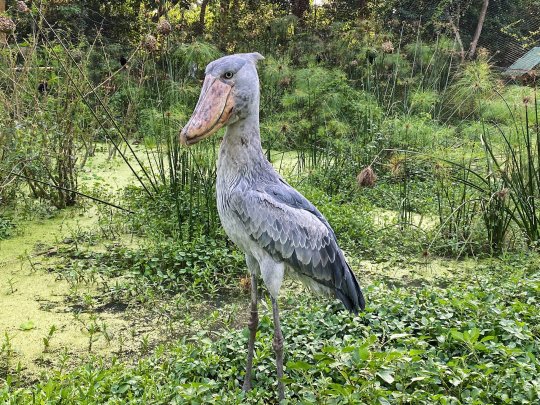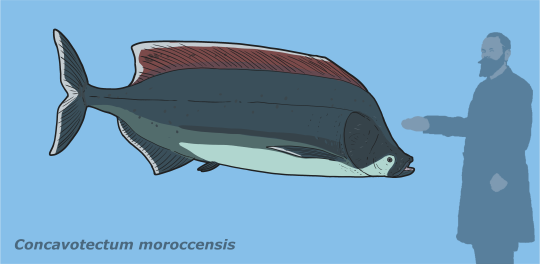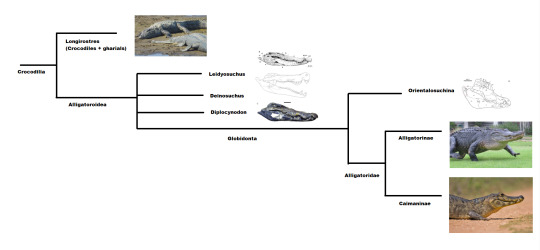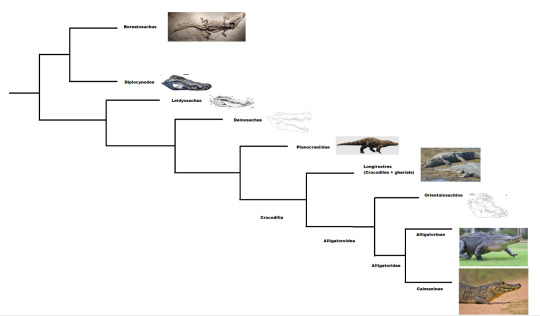#cretaceous fossils
Explore tagged Tumblr posts
Text







friends :)
#paleontology#mesozoic#late cretaceous#pleistocene#gryposaurus#akainacephalus#ankylosaurus#hagryphus giganteus#hagryphus#deinosuchus#bison#ice age bison#giant bison#mammoth#mamuthus#columbian mammoth#fossils#dinosaurs#dinosaur#dinosaur fossils#natural history#earth history#earth science#natural science#mesozoic fossils#cretaceous period#cretaceous fossils#cenozoic
30 notes
·
View notes
Text

whenever i can't picture dinosaurs existing i just humble myself by looking at birds alive today. what the actual fuck is that thing
#just look into the eyes of flamingos and you can see the dinosaur#biology#science#stem#sciblr#paleontology#zoology#fossils#prehistoric#dinosaurs#earth science#geoscience#dinosaur#paleoblr#cretaceous#sauropod#geology#prehistoric animals#birds#birdblr
6K notes
·
View notes
Text

Spinosaurus drama is cool and things, but do you know what's even cooler? Better fossils of animals that lived with Spinosaurus!
There is a new specimen of Concavotectum currently on display in Tuscon. BigSkyFossils took some photos of it and I had to doodle it! It's been a while since I did a tselfatiform and now we have finally an idea how the postcranium looked like!
So far we only had a few fragments and this pretty good skull. As some people noted though, the eye is reconstructed in the wrong corner.

#sciart#paleoart#paleostream#palaeoblr#cretaceous#spinosaurus#kem kem#morocco#fossil fish#concavotectum
4K notes
·
View notes
Text

NEW RAPTOR HAND! This is the partial hand of a raptor dinosaur that we collected from our super-site "Jack's bonebed" in 2024. It does not look quite right to be from the troodontid raptor that we have been collecting from this site, so we think it is from another skeleton that we have only just identified coming out of the same bed - a parrot-mimic oviraptorid (technically a Caenagnathid). We have a few tentative pieces of this skeleton so far, but it's looking really promising!
What's especially cool about this specimen is that it contains the "semi-lunate carpal" (meaning: half-moon wrist bone, outlined in red). This strange little bone was really important in the "birds are dinosaurs" debate: when the raptor bends its wrist, the twisted shape of the semi-lunate carpal means the arm folds like the wing of a bird. Super cool!
I purposely left a bit of matrix between the bones for stability. The bone is fairly crunchy and cracked so there was a little Apoxie gap filling plus the tiny cracks in the bones had to be meticulously cleaned grain by grain. All work done under a compound lens microscope between 12-50x magnification.
From US Public Lands administered by the Bureau of Land Management - Montana/Dakotas
#fossil preparation#fossil#fossils#dinosaurs#paleontology#paleoblr#palaeontology#palaeoblr#birds#theropod#raptor#Jack's Bonebed#Cretaceous#badlands dinosaur museum#science#fossil prep
499 notes
·
View notes
Text

It’s Fossil Friday! Let’s swim back in time about 85 million years to the Late Cretaceous to meet Xiphactinus, a gigantic predatory fish. This species could reach lengths of 17 ft (5.2 m) and was capable of swallowing a 6-ft- (2-m-) long fish whole! The Museum’s Xiphactinus fossils come from Logan County, Kansas, which is home to 70-ft- (21.3-m-) tall sedimentary formations. Though that might not sound like an ideal home for an ocean-dweller, the entire area was covered by a vast inland sea during the Cretaceous. See Xiphactinus in the Museum’s Hall of Vertebrate Origins!
Photo: Image no. ptc-6634 © AMNH (taken 1996)
#science#amnh#museum#fossil#nature#natural history#animals#fact of the day#did you know#fish#paleontology#late cretaceous#cretaceous#sea creatures#marine biology#marine animals#natural history museum#american museum of natural history
1K notes
·
View notes
Text

let's be fossilized with mama
(cr. geosciences jorunal)
180 notes
·
View notes
Text
Deinosuchus: Giant Alligator or something older?
I know the title sucks, I couldn't think of anything poetic or clever ok? Anyways, still catching up on croc papers to summarize and this one did make a few waves when it was published about a week ago.
"Expanded phylogeny elucidates Deinosuchus relationships, crocodylian osmoregulation and body-size evolution" is a new paper by Walter, Massonne, Paiva, Martin, Delfino and Rabi, with quite a few of these authors having considerable experience with crocodile research. The thesis of the study is both simple and unusual. They suggest that several crocodilians traditionally held as stem-alligators, namely Deinosuchus, Leidyosuchus and Diplocynodon, weren't alligatoroids at all. In fact, if the study holds up they might not have been true crocodilians.
Ok, lets take a step back and briefly look at our main three subjects. Deinosuchus of course needs no introduction, a titan of the Cretaceous also known as the terror crocodile in some more casual sources, its easily one of the most iconic fossil crocodiles. It lived on either side of the Western Interior Seaway during the Campanian, fed on giant turtles and dinosaurs and with size estimates of up to 12 meters its easily among the largest crocodylomorphs who have ever lived.
Artwork by Brian Engh

Leidyosuchus also lived during the Campanian in North America and I would argue is iconic in its own right, albeit in a different way. It's historic to say the least and once housed a whole plethora of species, but has recently fallen on hard times in the sense that most of said species have since then been transferred to the genus Borealosuchus.
Artwork by Joschua Knüppe

Finally there's Diplocynodon, the quintessential croc of Cenozoic Europe. With around a dozen species found from the Paleocene to the Miocene all across Europe, it might be one of the most well studied fossil crocs there is, even if its less well known by the public due to its relatively unimpressive size range.
Artwork by Paleocreations

All three of these have traditionally been regarded as early members of the Alligatoroidea, one of the three main branches that form Crocodilia. In these older studies, Alligatoroidea can be broken up into three groups nested within one another. Obviously the crown is formed by the two living subfamilies, Alligatorinae and Caimaninae, both of which fall into the family Alligatoridae. If you take a step further out you get to the clade Globidonta, which in addition to proper Alligatorids also includes some basal forms with blunt cheek teeth as well as Orientalosuchina, tho jury's still out on whether or not they are truly alligator-relatives. And if you take a final step back and view Alligatoroidea as a whole, then you got our three main subjects neatly lined up outside of Globidonta in varying positions.
Below a highly simplified depiction of previous phylogenies. Deinosuchus, Leidyosuchus and Diplocynodon are often regarded as non-globidontan alligatoroids.

This new study however changes that long standing concensus. The team argues that several features we once thought defined alligatoroids are actually way more common across Crocodilia and even outside of it while also leverging some of the features of Deinosuchus and co. that have always been out of the ordinary. For instance, early alligatoroids are generally characterized as being comparably small, having had short, rounded heads, the afforementioned globular cheek teeth and of course the feature that still allows us to differentiate them from true crocodiles, the fact that they have a clear overbite. Now Leidyosuchus, Deinosuchus and Diplocynodon all have proportionally longer snouts than alligatoroids, their teeth interfinger like in crocodiles and most prominently (and namegiving for Diplocynodon) there is a large notch behind the snout tip that serves to receive two enlarged teeth of the lower jaw. These are of course just superficial examples, but if you wanna get into the nitty gritty check out the paper.
Below a simplified version of the papers phylogeny. Borealosuchus clades with Diplocynodon and Leidyosuchus and Deinosuchus are successive taxa. Planocraniidae are the sister to Crocodilia, which consists of Crocodyloids, Gavialoids (together Longirostres) and Alligatoroids.

Something also worth addressing in light of these results is salt tolerance in crocodilians and paleogeography. Basically, if you ignore Deinosuchus and co. (or well, just follow this new paper), then it is most likely that alligatoroids originated on the continent of Laramidia, i.e. the western half of America back when it was bisected by an enormous inland sea. Today, alligatoroids are famously intolerant of saltwater, yes, there are instances where alligators have been known to enter coastal waters, but its a far cry from what true crocodiles can achieve (just an example here's my recent post on Caribbean crocodiles). Given that alligatoroids don't appear on Appalachia, the other half of North America, until after the inland sea closes, this very much suggest that this intolerance goes way back. This has however always been at odds with Deinosuchus, which famously showed up along both the eastern and the western coast of the inland sea and at least lived close enough to the coast to leave its mark on the shells of sea turtles. We know it inhabited various near-shore environments and even stable isotope analysis of its teeth points towards it consuming either saltwater or prey that lives in the ocean. To a lesser degree its worth mentioning Diplocynodon, which though usually a freshwater animal has at least one species from coastal deposits. Now I do think its worth highlighting that just being salt tolerant doesn't necessarily mean they can't have been alligatoroids, given that salt glands could have easily been lost after Deinosuchus split off from other alligatoroids. Nevertheless, a position as a stem-crocodilian does add up with it being salt tolerant, with the assumption being that being tolerant to saltwater is basal to crocodilians as a whole and was simply lost in a select few lineages such as alligatoroids.
Given that its range spanned both coastlines of the Western Interior Seaway as well as direct evidence for interactions with marine life, Deinosuchus likely ventured out into the sea from time to time like some modern crocodiles.


There's also the matter of timing. When alligatoroids first appeared 82 million years ago, we already see the classic blunt-snouted morphotype with Brachychampsa and our dear giant Deinosuchus. Now if both were alligatoroids, this would suggest that they've been separate quite some time before that to bring forth these drastically different forms, yet attempts to estimate the divergence date suggest that they split no earlier than 90 million years ago. So if Deinosuchus is not an alligatoroid, then the timeline adds up a bit better. However I think the best example of this new topology really explaining an evolutionary mystery doesn't come from Deinosuchus, but from Diplocynodon. Those that know me might remember that I started working on researching Diplocynodon for Wikipedia, a process that's been slow and painfull both due to the 200 years of research history and the good dozen or so species placed in this genus. Tangent aside, one big mystery around Diplocynodon is its origin. They first appear in the Paleocene and survive till the Miocene, tend to stick to freshwater and oh yeah, species of this genus are endemic to Europe. Given that previous studies recovered them as alligatoroids, nobody was quite sure where Diplocynodon came from. Did they originate in North America and cross the Atlantic? Where they salt tolerant before and simply stuck to freshwater once in Europe? Or are they a much older alligatoroid lineage that entered Europe via Asia after having crossed Beringia. You know, the kind of headbreaking stuff we get when the fossil record is incomplete. But this new study recovers Diplocynodon as being closely related to the non-crocodilian Borealosuchus from the Cretaceous to Paleogene of North America. And that makes some sense, historically the two have been noted to be similar, hell there were even cases when Borealosuchus remains were thought to be North American examples of Diplocynodon. And Borealosuchus has the same double caniniforms as the other crocs we discussed so far. So when our three former alligatoroids got pushed outside of Crocodilia, Diplocynodon ended up forming a clade with Borealosuchus. And since Borealosuchus was wide spread in America by the late Cretaceous, and possibly salt tolerant, then it could have easily spread across Greenland and Scandinavia after the impact, giving rise to Diplocynodon.
The results of this study seem to suggest that Borealosuchus and Diplocynodon are more closely related that previously thought.


And since this is a Deinosuchus paper...of course theres discussion about its size. A point raised by the authors is that previous estimates typically employ the length of the skull or lower jaw to estimate body length, which might not be ideal and is something I definitely agree with. The problem is that skull length can vary DRASTICALLY. Some animals like early alligatoroids have very short skulls, but then you have animals in gharials in which the snout is highly elongated in connection to their ecology. Given that Deinosuchus has a relatively long snout compared to early alligatoroids, size estimates based on this might very well overestimate its length, while the team argues that head width would yield a more reasonable results. Previous size estimates have ranged from as low as 8 meters to as large as 12, which generally made it the largest croc to have ever existed. Now in addition to using head width, the team furthermote made use of whats known as the phylgenetic approach, which essentially bypasses the problem of a single modern analogue with peculariar proportions influencing the result. Now there is a bunch more that went into the conclusion, but ultimately the authors conclude that in their opinion, the most likely length for the studied Deinosuchus riograndensis specimen was a mere 7.66 meters in total length. And before you jump to any conclusions, DEINOSUCHUS WOULD HAVE GOTTEN BIGGER TRUST ME. I know having read "12 meter upper estimate" earlier is quite a contrast with the resulting 7.66 meters, but keep in mind this latter estimate is just one specimen. A specimen that in previous studies was estimated to have grown to a length of somewhere between 8.4 - 9.8 meters. Now yes, this is still a downsize overall, but also given that this specimen is far from the largest Deinosuchus we have, this means that other individuals would have certainly grown larger. Maybe not those mythical 12 meters, but still very large. So please keep that in mind.
Two different interpretations of the same specimen of Deinosuchus. Top a proportionally larger-headed reconstruction by randomdinos, bottom a smaller-headed reconstruction by Fadeno. I do not care to weigh in on the debate other than to say that size tends to fluctuate a lot between studies and that I'm sure this won't be the last up or downsize we see.


Regardless of the details, this would put Deinosuchus in the "giant" size category of 7+ meters, while early alligatoroids generally fall into the small (<1.5 meters) or medium (1.5-4 meters) size categories. The authors make an interesting observation relating to gigantism in crocs at this point in the paper. Prevously, temperature and lifestyle were considered important factors in crocs obtaining such large sizes, but the team adds to that the overall nature of the available ecosystem. In the case of Deinosuchus, it inhabited enormous coastal wetlands under favorable temperature conditions and with abundant large sized prey, a perfect combination for an animal to grow to an enormous size. And this appears to be a repeated pattern that is so common its pretty much regarded as a constant. To quote the authors, "a world with enormous crocodyliforms may have been rather the norm than the exception in the last ~ 130 million years." For other examples look no further than the Miocene of South America, the extensive wetlands of Cretaceous North Africa or even Pleistocene Kenya.
One striking example for repeated gigantism in crocodilians can be found in Miocene South America, when the caimans Purussaurus and Mourasuchus both independently reached large sizes alongside the gharial Gryposcuhus. The illustration below by Joschua Knüppe features some of the smaller earlier members of these species in the Pebas Megawetlands.

So that's it then, case closed. Deinosuchus and co aren't salt-tolerant alligators, they are stem-crocodilians. Deinosuchus was smaller than previously thought and Diplocynodon diverged from Borealosuchus. Leidyosuchus is also there. It all adds up, right? Well not quite. This all is a massive upheaval from what has previously been accepted and while there were outliers before, the alligatoroid affinities of these animals were the concensus for a long time. Future studies will need to repeat the process, analyse the data and the anatomical features and replicate the results before we can be sure that this isn't just a surprisingly logical outlier. Already I heard some doubts from croc researchers, so time will tell if Deinosuchus truly was some ancient crocodilian-cousin or if previous researchers were correct in considering it a stem-alligator. I for one will keep my eyes peeled.
#pseudosuchia#crocodylomorph#eusuchia#crocodilia#crocodile#alligator#deinosuchus#leidyosuchus#diplocynodon#palaeoblr#cretaceous#fossils#prehistory#extinct#long post#science news#croc#gator#borealosuchus#evolution
165 notes
·
View notes
Text
Stunning rare Pyritized Ammonite Fossils from the lower Cretaceous period ~ 120 mil years old.✨ Found in Volga river, Ulyanovsk region, Russia
Credit: Pacific Minerals
302 notes
·
View notes
Text


“Mapping flow lines within the amber using UV light, in ‘angel wing’ specimen.”
#baby bird feathers! these cretaceous baby birds didn’t have a downy fluffball stage#amber#blue amber#fossils
196 notes
·
View notes
Text

[ The skull is mounted on a custom steel armature, which allows for it to be seen all the way around. ]
"After seven years of work, the best preserved and most complete triceratops skull coming from Canada — also known as the "Calli" specimen — is on display for the first time since being found in 2014 at the Royal Tyrrell Museum in Drumheller, Alta. A museum news release calls the specimen "unique" because of where it was discovered, the age of the rock around it, and how well it was preserved. Following the floods that tore through Alberta about 10 years ago, the Royal Tyrrell staff were engaged in flood mitigation paleontology work when the triceratops skull was discovered in 2014. Triceratops fossils are rare in Canada. This skull was found in the foothills of southwestern Alberta — an area where dinosaur fossils in general are uncommon — and nicknamed "Calli" after Callum Creek, the stream where it was discovered. Transported via helicopter in giant, heavy chunks, the skull and most of the jaw pieces were extracted over the course of a month in 2015. The rest of the triceratops' skeleton was not found. Roaming the earth roughly 68 to 69 million years ago, the museum says this skull was buried in stages, evident by the fossilization process. "Paleontologists know this because the specimen was found in different rock layers, and the poorly preserved horn tips suggest they were exposed to additional weathering and erosion," reads a museum blog about the triceratops skull. "The rest of the skeleton likely washed away," noting that the lower jaws were found downstream. From 2016 to 2023, Royal Tyrrell technician Ian Macdonald spent over 6,500 hours preparing this fossil, removing over 815 kilograms of rock that encased the skull. This triceratops skull is the largest skull ever prepared at the museum and its third largest on display."
Read more: "Canada's biggest and best triceratops skull on display in Alberta" by Lily Dupuis.
#palaeoblr#Palaeontology#Paleontology#Dinosaur#Triceratops#Fossil#Cretaceous#Mesozoic#Ceratopsian#Extinct#Prehistoric#Photo#Article#Information#Museum#Royal Tyrrell Museum
2K notes
·
View notes
Text



7.3" Cretaceous Heteromorph Ammonite (Didymoceras) - South Dakota
#fav#cretaceous#heteromorph#heteromorph ammonite#ammonite#didymoceras#ammonoid#fossil#fossils#prehistoric#shell fossil#png#transparent#paleontology#paleoblr#paleo
87 notes
·
View notes
Text

The smell of rain fills the air, though not a single drop has fallen. A huge Mosasaurus slowly swims through a warm, shallow sea, unbothered by the noisy pterosaurs.
The world seems half asleep.
Everything is gray.
#biology#palaeoart#fossils#geology#mesozoic#paleoart#sciart#science#palaeontology#dinosaurs#mosasaurus#pterosaur#nyctosaurus#pteranodon#coral reef#reef#cretaceous period#late cretaceous#prehistoric#prehistoric planet#nasilow#nasiłów
164 notes
·
View notes
Text

A partial Cretaceous coelacanth jaw of an Axelrodichthys lavocati from the Kem Kem Group in Hassi Zguilma, Morocco. This species of mawsoniid coelacanthiform was formally, and may still be, assigned to the genus Mawsonia. These giant lobe-finned fish were likely a vital food source for the larger piscivorous predators in the deposit such as Spinosaurus, Sigilmassasaurus, and Elosuchus.
#fish#coelacanth#fossils#paleontology#palaeontology#paleo#palaeo#axelrodichthys#mawsonia#mawsoniidae#cretaceous#mesozoic#prehistoric#science#paleoblr#fossil friday#fossilfriday#アクセルロディクティス#マウソニア#シーラカンス#化石#古生物学#マウソニア科
123 notes
·
View notes
Text




Series of drawings for a personal project. Featuring the Cretaceous dinosaur Acrocanthosaurus atokensis, one of the largest and most successful theropods found in North America.
#artists on tumblr#paleoblr#paleoart#paleomedia#dinosaur#prehistoric#cretaceous#mesozoic#jurassic park#prehistoric planet#acrocanthosaurus#acro#fossil friday#carcharodontosaur#theropod#fran
63 notes
·
View notes
Text
Raptor brains!

Here's a Troodontid braincase I recently completed preparing using small air scribes, carbowax techniques, and air abrasion under high magnification microscopes. Every square millimeter of this paper-thin hydroxyapatite wants to shatter like tempered glass.
There are probably fewer than 10 Troodontid braincases in the world, and most are squashed flat. This new specimen is preserved in 3D so it'll be put it in a micro-CT scanner to see the inside of the brain cavity. I purposely left matrix inside the cavity because it could have data that the CT scanner could let us see and acts as a support for the brittle bone.
From US Public Lands administered by the Bureau of Land Management - Montana/Dakotas. Found by volunteer Tom Beckenholdt. Collected by Tom & Elizabeth Freedman Fowler.
#badlands dinosaur museum#Cretaceous#judith river formation#theropod#Troodontid#palaeontology#paleoblr#palaeoblr#fossils#fossil#dinosaurs#fossil prep#paleontology#science#troodon#raptor
458 notes
·
View notes
Text

It’s Fossil Friday! If you’ve been inside the Museum’s Hall of Vertebrate Origins, you may have noticed this marine reptile hanging overhead. Meet Thalassomedon haringtoni, a long-necked plesiosaur that lived during the Late Cretaceous some 85 million years ago. This behemoth had a relatively small head and many sharp teeth. Its long, flexible neck probably helped in grasping rapidly moving prey. Plesiosaurs, a group related to lizards, lived in the sea. Although they weren’t dinosaurs, they became extinct at the end of the Cretaceous around 65 million years ago, at the same time as the non-avian dinosaurs.
The Museum is open daily from 10 am–5:30 pm! Plan your visit.
Photo: © AMNH
#science#amnh#museum#fossil#nature#natural history#animals#fact of the day#did you know#plesiosaur#marine life#ancient oceans#cretaceous period#late cretaceous#cool animals#natural history museum#museum of natural history#dinosaurs#prehistoric animals#stem
1K notes
·
View notes